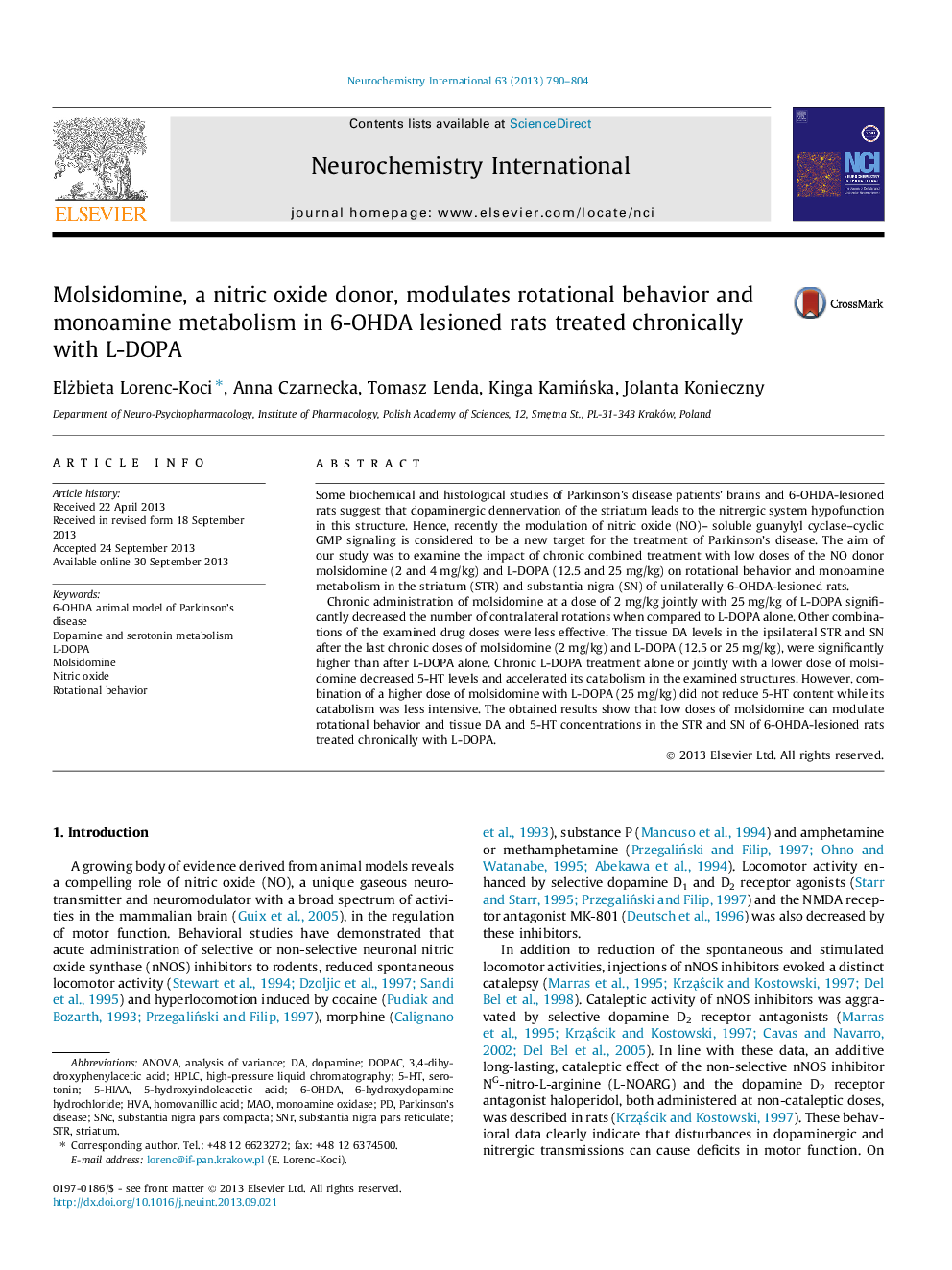| Article ID | Journal | Published Year | Pages | File Type |
|---|---|---|---|---|
| 10958036 | Neurochemistry International | 2013 | 15 Pages |
Abstract
Chronic administration of molsidomine at a dose of 2Â mg/kg jointly with 25Â mg/kg of L-DOPA significantly decreased the number of contralateral rotations when compared to L-DOPA alone. Other combinations of the examined drug doses were less effective. The tissue DA levels in the ipsilateral STR and SN after the last chronic doses of molsidomine (2Â mg/kg) and L-DOPA (12.5 or 25Â mg/kg), were significantly higher than after L-DOPA alone. Chronic L-DOPA treatment alone or jointly with a lower dose of molsidomine decreased 5-HT levels and accelerated its catabolism in the examined structures. However, combination of a higher dose of molsidomine with L-DOPA (25Â mg/kg) did not reduce 5-HT content while its catabolism was less intensive. The obtained results show that low doses of molsidomine can modulate rotational behavior and tissue DA and 5-HT concentrations in the STR and SN of 6-OHDA-lesioned rats treated chronically with L-DOPA.
Keywords
SNRsubstantia nigra pars reticulateMAO5-HIAADOPACSNCSTR5-HT6-OHDA3,4-dihydroxyphenylacetic acid5-Hydroxyindoleacetic acidl-DOPAStriatumParkinson’s diseaseanalysis of varianceANOVAsubstantia nigra pars compactaDopamineRotational behaviorSerotoninMolsidominemonoamine oxidaseNitric oxidehomovanillic acidHVAhigh-pressure liquid chromatographyHPLC
Related Topics
Life Sciences
Biochemistry, Genetics and Molecular Biology
Cell Biology
Authors
Elżbieta Lorenc-Koci, Anna Czarnecka, Tomasz Lenda, Kinga KamiÅska, Jolanta Konieczny,
